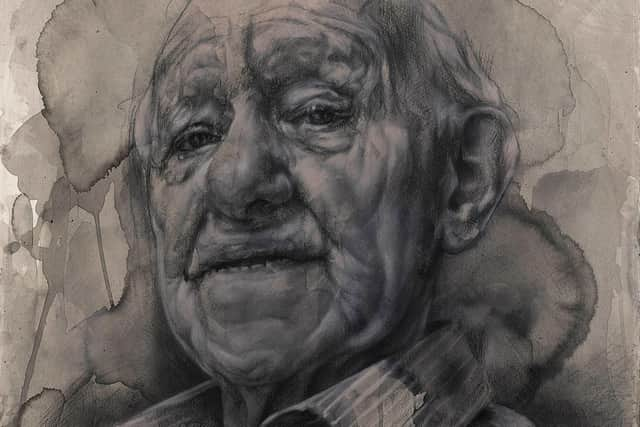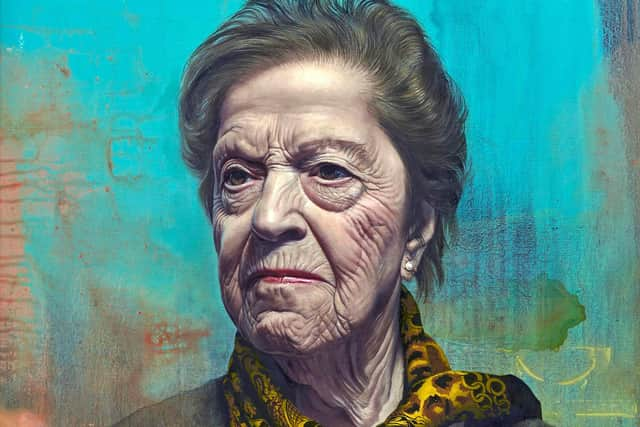Art reviews: Masterpieces from Buckingham Palace | Seven Portraits: Surviving the Holocaust


Masterpieces from Buckingham Palace, the Queen’s Gallery, Edinburgh *****
Seven Portraits: Surviving the Holocaust, Palace of Holyroodhouse, Edinburgh *****
Advertisement
Hide AdMasterpiece is an overused word, so its plural, masterpieces, should carry even less conviction, but, marking the Queen’s jubilee, Masterpieces from Buckingham Palace at the Queen’s Gallery is what it says it is. All the paintings are Italian, Dutch or Flemish from between 1500 and 1700. The earliest is a portrait of an unknown woman by Andrea del Sarto. Left unfinished at his sudden death in 1530, the picture’s unfinished state adds to the mysterious power of her presence. Next in date is an imaginary portrait of Pallas Athene painted by Parmigianino around 1535. She is regal as a goddess should be, which is perhaps why the picture was chosen by the Dutch as present to Charles II on his accession in 1660.


Cristofano Allori’s Judith with the Head of Holofernes from 1613 is beautiful, but also startlingly direct. Wearing a saffron coloured robe and carrying her grisly trophy, Judith is beautiful, haughty and defiant and is in fact a portrait of a woman with whom the artist had an unhappy relationship. Just how unhappy we can clearly see. The severed head of Holofernes is a self-portrait. Hanging nearby, Artemisia Gentileschi’s Self Portrait as the Allegory of Painting would be outstanding in any company. It is hardly an allegory, however, more a very real portrayal of painting as an absorbing, active and energetic business. Artemisia is leaning on her left arm for balance as she reaches up with her right to the top of her canvas. Her face is at an angle and her concentration intense. It is a remarkable display of surpassing skill. An open challenge to all male artists before or since, it belonged to Charles I and is dated 1638, the year Artemisia travelled to England to work for him. Her tour de force self-image might have been her visiting card, an advance testimonial to her remarkable accomplishment.
Anthony van Dyck also worked for Charles I and in the same year, 1638, painted the double portrait of Thomas Killigrew and a friend, possibly William, Lord Crofts. Was there rivalry? Certainly Van Dyck, too, takes portraiture beyond its usual limits. Killigrew had recently lost his wife and looks inconsolable. Holding a drawing for her monument, he is not paying attention either to it or to his friend pointing to a sheet of blank paper, suggesting, perhaps, either that he writes an obituary or perhaps just makes a new beginning.
Rembrandt’s painting of Christ and St Mary Magdalen at the Tomb was also painted in 1638, although bought by George IV when Prince Regent, it was not acquired till 1819. When she saw the risen Christ, Mary Magdalene thought he was a gardener, and so Rembrandt has given him a broad hat and spade. Right behind Mary, Christ seems just to have emerged from the tomb. His sudden appearance has startled a sleepy angel. A second angel is more alert. As Mary looks back and up, the rising sun catches her astonished face. This is the Gospel, not suspended forever in some remote spiritual realm, but reimagined as life is lived. This of course was the gift, not just of Rembrandt, but of all Dutch painting in the 17th century, which rarely gets credit for the scale of its imaginative achievement. Shaking off delusions of grandeur, for the first time these artists sought to describe the world as we live in it. There is a wonderful Ruysdael landscape here, for instance. A tall windmill stands above a marshy pond. Further away linen is laid out to bleach. In the left corner, a track leads into the picture as though, following a man and his dog, we could walk out past the mill and into the landscape beyond.
Time is inescapable and if an artist would paint the world like this as we live in it, somehow time has to be taken into account and so it is made explicit by Claude in a magically beautiful painting of sunset over Rome seen from Tivoli. We can sense the movement of the Earth as the sun hangs just above the horizon and the Campagna beneath falls into the shadow of night. Two lovely paintings by Pieter de Hooch are also haunting examples of this palpable sense of time. In one, two women are in a courtyard. One, in shadow, is spinning, the other, carrying a jug and pail, moves from sunlight into shadow. The stillness is uncanny because the implied movement of time is palpable, but suspended. In the other picture three men and a woman are playing cards beneath a sunlit window. The social dynamics of the group are enigmatic, but we sense them nonetheless. To the left, we see through an open door another woman approaching from a courtyard. It is a masterly account of a moment, somehow fixed and yet as transient as all moments must be.


De Hooch’s tavern scene is decorous, others are less so. In Jan Steen’s Interior of a Tavern, the painter himself is clearly enjoying the rumbustious party. In David Teniers’s A Kermis on St George’s Day, the party is out in the inn-yard. A couple are dancing nicely enough to the bagpipes, but there is a brawl going on beyond the gate while a drunk man is helped home by his family. It is a generic scene of rustic merriment that echoed through Scottish art and poetry in the next century and beyond.
Advertisement
Hide AdBut the ultimate masterpiece here must be Rembrandt’s portrait of Agatha Bas painted in 1641. She was the artist’s neighbour and his own self-portrait from the following year is nearby to keep her company. Wearing fur, two gold chains and a black velvet cap, the picture was painted at the height of his prosperity and his portrait of Agatha Bas is a brilliant demonstration of the mastery that got him there. Her gaze is direct, her elaborate costume minutely observed and exquisitely painted which gives extraordinary conviction to our sense of her presence. At that moment in the 1640s, Rembrandt was investigating illusion, how painting can seem to be not a separate, other reality, but an extension of this one and Agatha Bas is looking at us through a window with one hand on the frame. The other hand, holding a fan, reaches out beyond the frame into our space and so, too, from her time into ours. Pure magic.
Also at Holyrood are seven portraits of Holocaust survivors commissioned by Prince Charles from seven artists. The portraits in Seven Portraits: Surviving the Holocaust are Lily Ebert by Ishbel Myerscough, Anita Lasker-Wallfisch by Peter Kuhfeld, Helen Arunson by Paul Benney, Arek Hersh by Massimiliano Pironti, Zig Shipper by Jenny Saville, Manfred Goldberg by Clara Drummond and Rachel Levy by Stuart Pearson Wright. They are all more or less direct, nearly photographic images. The most animated is Jenny Saville’s portrait of Zigi Shipper, but all the artists have had the humility to step back and let the faces of these indomitable survivors bear witness for us and also, thanks to this imaginative commission, for future generations.
Advertisement
Hide AdMasterpieces from Buckingham Palace until 25 September; Seven Portraits: Surviving the Holocaust until 6 June


A message from the Editor
Thank you for reading this article. We're more reliant on your support than ever as the shift in consumer habits brought about by coronavirus impacts our advertisers.
If you haven't already, please consider supporting our trusted, fact-checked journalism by taking out a digital subscription at https://www.scotsman.com/subscriptions